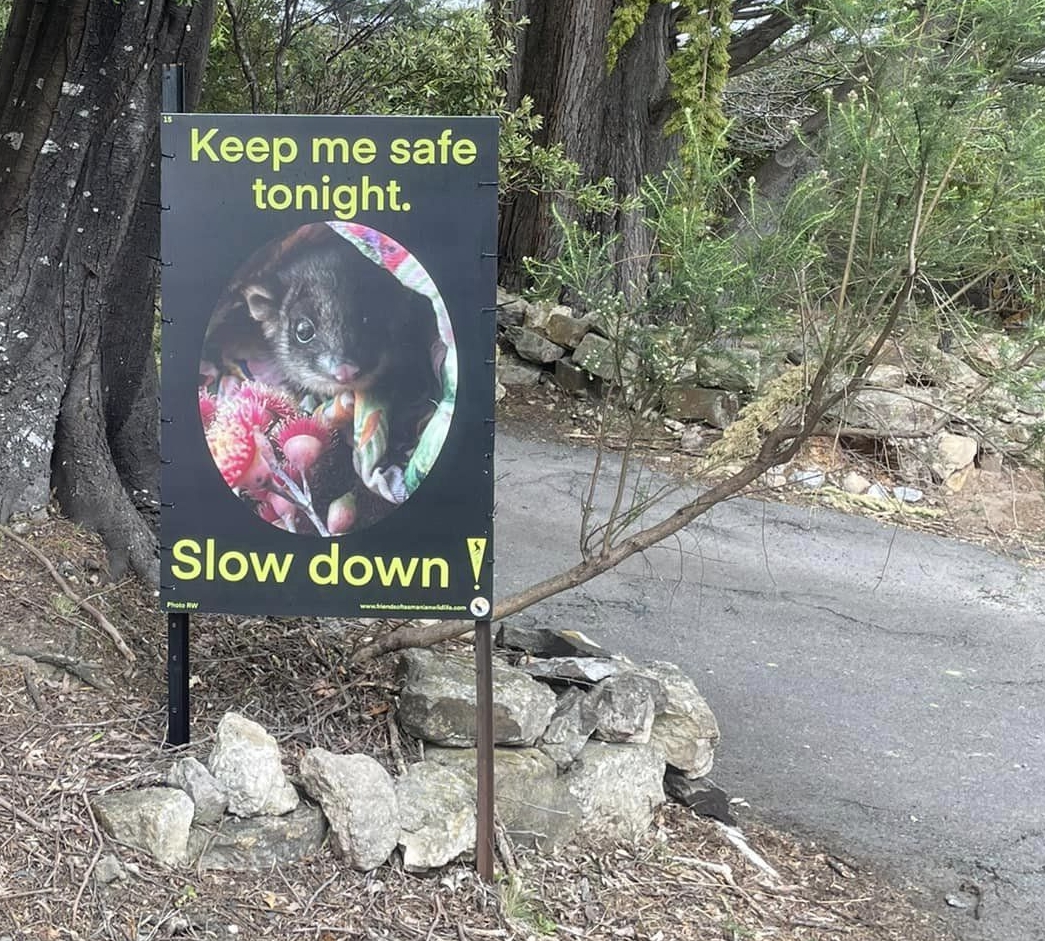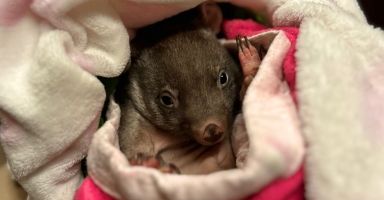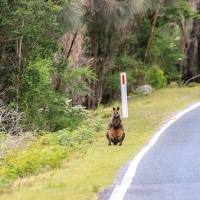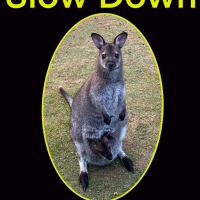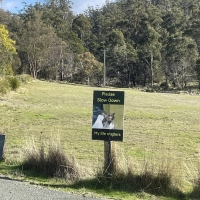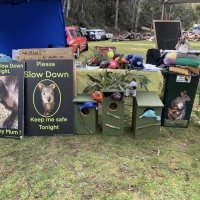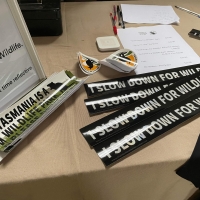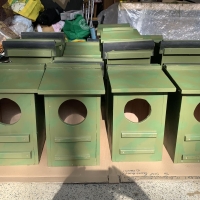Wildlife Safe Tasmania has met with Councils to support them in implementing wildlife roadkill mitigation strategies.
This has seen to-date the promotion of Safe Driving Practices and animal rescue information on Council websites including the Kingborough Council website.
What are other councils around Australia doing?
Several local councils in Australia have been proactive in implementing roadkill mitigation strategies. Here are a few examples:
Yarra Ranges Council (Victoria):
This council has been involved in initiatives to reduce wildlife roadkill, including the installation of wildlife crossing signs and the construction of fauna underpasses in areas where wildlife is frequently seen crossing roads.
Gold Coast City Council (Queensland):
The Gold Coast is known for its diverse wildlife, and the council has implemented measures such as wildlife corridors and educational programs to raise awareness among drivers about the importance of being cautious in wildlife-rich areas.
Brisbane City Council (Queensland):
The council has developed a Wildlife Management Plan that includes strategies for reducing roadkill, such as the installation of wildlife fencing and conducting regular monitoring of roadkill hotspots.
Shire of Nillumbik (Victoria):
This council has undertaken projects to enhance wildlife connectivity, which includes creating crossings and implementing signage to alert drivers in areas with high wildlife activity.
Mornington Peninsula Shire (Victoria):
The council has been involved in various ecological initiatives, including measures to prevent roadkill through the use of wildlife crossings and community engagement to educate residents and visitors about local wildlife.
These initiatives often involve collaboration with local wildlife organisations and community groups to ensure effective implementation and monitoring.
Stopping destructive Government Practices
In 2019, Bonorong Wildlife Sanctuary’s Greg Irons, Birdlife Tasmania’s Eric Woehler, and Rosalie Woodruff - launched a petition calling for a Parliamentary Inquiry into wildlife protection and management in Tasmania.
Our native fauna are globally recognised as unique and remarkable. However, our local governments permits an astronomical number of native animals to be killed every year.
Recently revealed information show Crop-protection Permits and Game Licences have been issued to kill hundreds of thousands of animals every year - including forester kangaroos, black swans, wombats, cockatoos, silvereyes, galahs and many others.
Tasmanian Greens MPs - Native Animal Numbers and Culling
In Tasmania, in the four and a half years from 2015 to the middle of 2019, information supplied by the Mercury Newspaper (from the Right to Information sourced from NRE, then DPIPWE) revealed that a staggering 1.857 million wallabies and possums have been killed in that four-and-a-half-year period. The sums equate to 1100 animals every single day over that period. That is 1100 protected native species that have been killed in Tasmania, authorised to be killed every single day.
Licence to Kill - The shocking scale of native wildlife killing in Australia
Humane Society International Australia (HSI) has released Licence to Kill, a report that reveals how licenced private landholders are killing native Australian wildlife at scale. The report shows that licensed private landholders across Australia were lawfully allowed to kill at least 1.2 million native animals in 2023.

